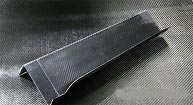Analysis of the Carbon Fiber Body of Luxury Cars: Lamborghini Aventador LP700-4
Stephan Winkelmann, CEO of Lamborghini Automobile, once said: “Lightweight engines and the most suitable power-to-weight ratio are the decisive factors for a supercar, which can provide sufficient driving pleasure while achieving low emissions. Lamborghini has invested a lot of energy in the application of new CFRP materials and has achieved a leading position in the industry. The Aventador LP700-4, which uses new materials, will also write a new chapter for Lamborghini.”

In terms of manufacturing technology, the Lamborghini development team carefully selected the following three main carbon fiber reinforced material manufacturing methods in its technical tool portfolio. They are resin transfer molding (RTM), prepreg and weaving. The three methods are respectively suitable for molded products, exposed parts of the car, roof structural pillars and hollow parts of the rocker panels, and strictly require production errors within 0.1mm.
Resin Transfer Molding (RTM)
This process involves preforming carbon fiber mats and impregnating them with a precise amount of resin. The mats are cured at high temperatures and the part is then molded. Lamborghini has achieved a major breakthrough in further perfecting this method. Using the patented “RTM-Lambo” process, the final molded product is no longer a bulky, complex metal part, but a lightweight carbon fiber component, making the manufacturing process faster, more flexible and more efficient.
Prepreg
Carbon fiber mats treated in this way are usually called “prepregs”, which means that they are pre-injected with thermosetting liquid resin by the supplier and stored at low temperatures. The carbon fiber mats are then laminated in the mold and cured in an autoclave. Prepreg parts are very complex to make, but the surface finish is very good (Class A finish), making them the best choice for exposed parts of the car.
Weaving
This carbon fiber weaving technology originated from the textile industry and is used to manufacture hollow parts for special purposes such as structural roof pillars and rocker panels. Woven parts are made by weaving the fibers in several layers in a diagonal direction. All parts are manufactured using RTM technology, which is used in a series of special processes to create the monocoque of the new V12 super sports car. This innovation greatly simplifies the manufacturing process compared to traditional methods.
In addition, epoxy foam parts are used in the monocoque. These parts are located in strategic positions and can play a spacer role between the layers of composite materials to increase the rigidity of the monocoque.
ANY QUESTIONS OR COMMENTS, PLEASE GET A HOLD OF US IN WHICHEVER WAY IS MOST CONVENIENT. WE WILL REPLY YOU WITHIN 24 HOURS.


